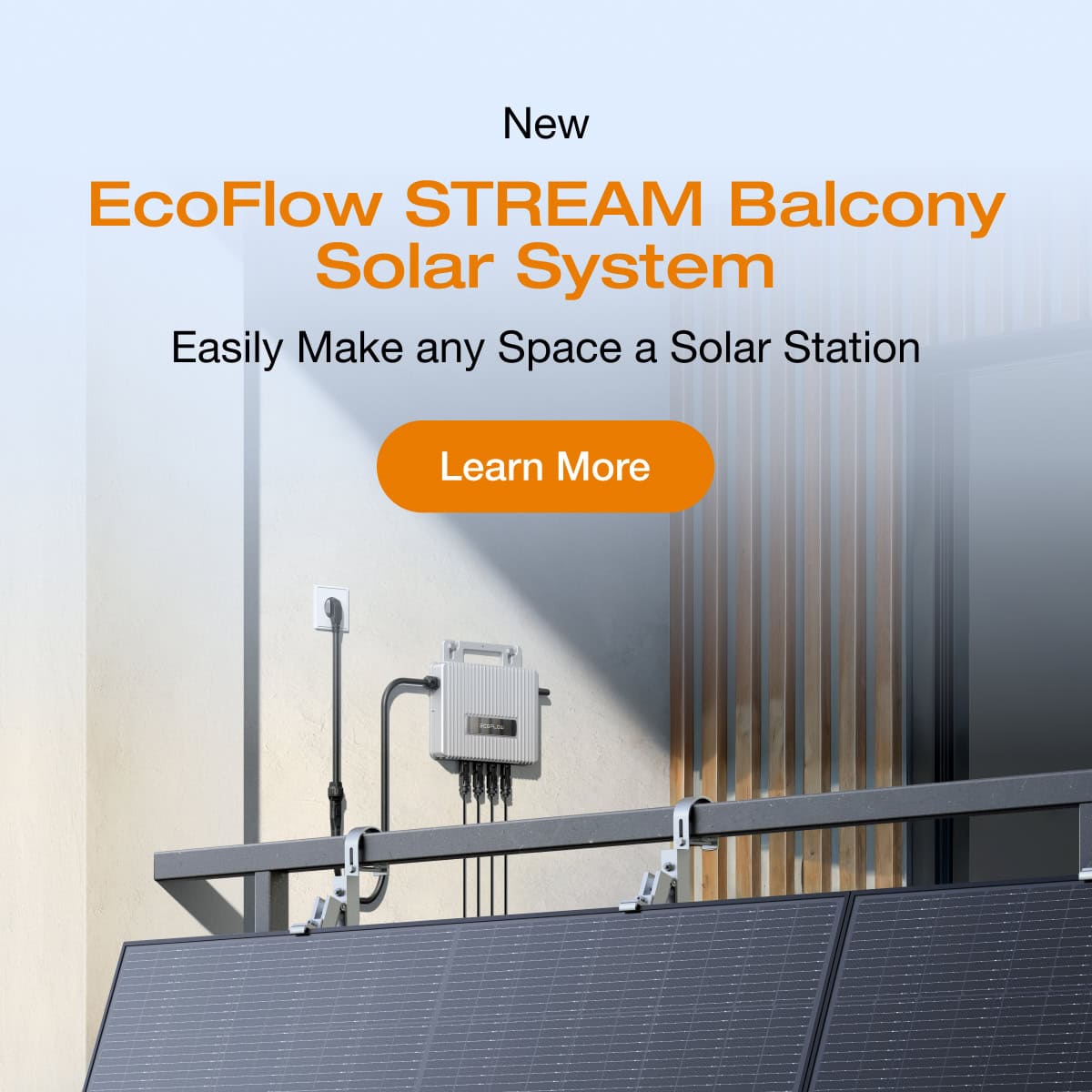In the past decade, solar panel efficiency and energy production potential have increased by about 40% on average.
With photovoltaic (PV) modules — like solar panels and shingles — efficiency measures how much electricity can be produced by available sunlight per square meter.
Simply put, the higher the efficiency rating, the more electricity you can produce while taking up the same amount of installation space.
The highest efficiency rating for commercially available PV cells currently hovers around 23%.
Another way to maximise electricity generation from available solar irradiation (sunlight) and space is to purchase bifacial solar panels.
But what are bifacial solar panels?
And how do they work?
Read on to find out.
What Are Bifacial Solar Panels?
Unlike conventional solar panels, bifacial solar panels have photovoltaic cells on both the front and rear of the module.
By utilising more of the available surface area for electricity generation, bifacial solar panels can produce more power from ambient sunlight than a conventional monofacial PV module.
Because solar energy is a clean, renewable energy source, ‘efficiency’ isn’t as crucial a measurement as it is with fossil fuels, where a finite resource is consumed.
However, there are many applications where generating the maximum electricity from available sunshine and space is essential.
For example, if you’re going on an off-grid adventure like camping and want to bring along a solar generator, EcoFlow’s 220W Bifacial Solar Panel can produce up to 65% more electricity than a monofacial panel of a similar size and weight.
Space and weight may not be as much of a concern for applications like rooftop solar panel installations.
But you’ll likely still want to utilise high-efficiency monocrystalline silicon PV modules like EcoFlow’s 400W Rigid Solar Panel to maximise electricity generation from the sections of your roof that receive direct sunlight during peak sun hours.
How Do Bifacial Solar Panels Work?
All solar panels that generate electricity do so using the photovoltaic effect.
First demonstrated in 1839, photovoltaic materials — like solar cells — produce a physical phenomenon, generating voltage and electrical current when exposed to light.
Here’s how it works.
The Solar Spectrum (Source: NASA).
Sunlight Absorption
The light energy the sun produces that reaches Earth comprises three primary types of electromagnetic radiation.
Each type of light is part of the solar spectrum that makes up solar irradiance — which measures the total amount of energy available from sunlight.
The three types of solar radiation that PV panels harness to generate electricity are:
- Visible Light
- Ultraviolet Light (UV)
- Infrared Light (IR)
Infrared and visible light comprise over 90% of the solar energy that penetrates the Earth’s atmosphere.
Thermal solar modules harness infrared radiation to generate heat, but the photovoltaic effect — and solar panels — rely on the spectrum of visible light.
(Source: EIA)
Solar Cells and the Photovoltaic Effect
Solar panels utilise photovoltaic cells to harvest photons from visible sunlight and convert solar energy into direct current (DC) electricity.
Most PV modules rely on pure monocrystalline or polycrystalline silicon solar cells to produce the photovoltaic effect.
Other types of solar cells in commercial use include:
- Passive Emitter and Rear Contact (PERC)
- Thin Film
- Perovskite
According to the International Energy Agency, crystalline silicon (cSi) “remains the dominant technology for PV modules, with a market share of more than 97%.”
Crystalline silicon is a non-mechanical semiconductive material that uses insulation and conduction to generate voltage (positive and negative current).
When different wavelengths of sunlight from across the solar spectrum hit the surface of a PV module, photons either bounce off through reflection, pass through the photovoltaic material, or get absorbed by the solar cell.
Once absorbed, the photons provide the energy for the semiconductor material to generate electricity.
Photon capture causes negative “free electrons” to circulate within the PV cell and move toward the device’s front surface.
The circulation of electrons creates an electrical imbalance within the cell, resulting in voltage potential.
The positive and negative charge — similar to those carried by battery terminals — is absorbed by electrical conductors in the cell to produce electricity when connected to a load such as a solar inverter or battery.
Unlike conventional monofacial solar panels, bifacial solar panels utilise PV cells on the rear of the module rear as well as the front.
Adding additional solar cells to the rear of the panel maximises electricity generation per square meter from available sunlight.
Using EcoFlow’s 220W Next-Gen Bifacial Solar Panel as an example, you can see how much additional electricity can be produced, particularly when mounted on a reflective surface like sand or snow.
In low light conditions and on cloudy days, the rear panel helps capture more ambient sunlight.
Like conventional monofacial PV modules, bifacial solar panels don’t work at night.
Here are the relevant specs.
| Product Name | EcoFlow 220W Bifacial Portable Solar Panel |
| Rated Power: | 220W Front Side/155W Rear Side |
| Efficiency: | 22 % – 23 % |
| Solar Cell Type: | Monocrystalline Silicon |
| Weight: | 9.5 KG |
| Folded Dimensions: | 82.0×50.0×3.2 cm |
| Unfolded Dimensions: | 82.0×183.5×2.5 cm |
| Waterproof/Dustproof Rating: | IP68 |
| Open Circuit Voltage: | 21.8V (Vmp 18.4V) |
| Short Circuit Current: | 13A (lmp 12.0A) Front Side / 8.8 A (lmp 8.4A) Rear Side |
| Recommended Portable Power Station: | EcoFlow RIVER 2 Pro/EcoFlow DELTA 2 |
Balance of System
Once PV modules generate direct current (DC) electricity, it is transmitted to a solar inverter for conversion to household (AC) power or a charge controller and solar battery for storage and later use.
Balance of System (BoS) in solar power refers to all the components—other than the PV modules—required to generate and store electricity.
There are three basic types of solar power systems available for residential and consumer use.
Depending on which type you choose, you’ll need the following components.
- Solar Inverter
- Charge Controller*
- Solar Battery*
- Battery Management System*
- Transfer Switch**
- Bidirectional or smart meter**
* Off-grid/hybrid only
** Required for grid-tied, optional for off-grid and hybrid. Integrates with home circuitry to provide auto-switchover and uninterruptible power supply (UPS) in a blackout.
It’s possible to purchase separate components for each of the above, but this can lead to compatibility issues.
Many prefer an all-in-one solar generator solution like EcoFlow DELTA Pro 3.
With 4000W of AC output and expandable battery storage of up to 12kWh (per portable power station), EcoFlow can run virtually any appliance in your home — yet it’s compact enough to take on the road.
EcoFlow DELTA Pro 3 features proprietary X-Core 3.0 tech architecture, providing industry-leading performance, safety, and intelligence.
X-Core 3.0 delivers the following benefits.
- X-Stream delivers record-speed charging — only 50 minutes
- X-Boost’s revolutionary soft-start algorithm supports up to 6000W of appliances and central HVAC systems with just one unit
- X-Link parallel expansion provides up to 21.6kW of output power and 90kWh of electricity storage
- X-Quiet volume minimisation means whisper-quiet operation at an industry-best 30dB*
- X-Fusion outpowers the grid by providing up to 7000W of electricity output from a single AC outlet in bypass mode. Standard household plugs deliver only 1800W. Plug in EcoFlow DELTA Pro 3 and increase your output by close to 300%
- X-Guard is a protective triad of structure, material, and AI that keeps your home and family safe. It can even self-extinguish in the unlikely event of a fire.
Find out more about X-Core 3.0 here.
*Under 2000W output
(Source: Our World In Data)
Bifacial Solar Panels Pros and Cons
Depending on your application, bifacial solar panels have numerous advantages over conventional PV modules.
However, the benefits come at a cost.
Pros
- Maximise Sunlight Capture
Conventional PV modules are monofacial. All the photovoltaic cells are installed on the front of the panel. The rear of the panel is used for electrical insulation and protecting interior components. It doesn’t generate additional electricity from available sunlight.
Bifacial solar panels feature a transparent rear panel and additional solar cells, helping to ensure that no solar irradiation (energy) goes to waste. - Ideal for Low Light Conditions and Overcast Skies
Monofacial solar panels generate the most electricity when optimally positioned to capture direct light during peak solar irradiation hours each day.
In locations with abundant sunlight, electricity production from conventional PV modules is likely sufficient.
However, in areas with relatively few peak sunlight hours and frequent cloud cover, bifacial solar panels can capture additional ambient sunlight that would otherwise go to waste. - Portable Off-Grid Power
If you plan on using portable solar panels and a power station like EcoFlow’s River Series or DELTA 2, the additional electricity generated by bifacial PV modules can be a game-changer.
You generate can up to ~25% more electricity in optimal conditions and it’s easy to reposition one or two EcoFlow 220W bifacial solar panels throughout the day to maximize harvesting direct and ambient sunlight.
Cons
- Cost
The primary benefit of bifacial solar panels is that they have more photovoltaic cells by surface areas than a similar-sized traditional solar panel.
However, they also require additional materials, components, and a more sophisticated manufacturing process.
Carefully calculate the solar panel output you can generate with bifacial vs traditional PV modules and weigh up your expected electricity bill savings over time against the increased cost.
- May Not Be Suitable for Multiple Unit Residential Solar Panel Arrays
Bifacial solar panels are a relatively new innovation. While they’re increasingly being deployed in utility-scale installations like solar farms, the benefits may not be sufficient to outweigh the expense in multi-unit home solar panel systems.
Conventional PV modules have dropped steeply in price over the last 10 years, largely due to increasing demand and economies of scale.
The manufacturing process for bifacial solar panels differs significantly from monofacial models, and far fewer factories are producing them worldwide.
If you live in a location with relatively little direct sunlight, bifacial solar panels are worth considering for large arrays.
Otherwise, one-sided monocrystalline or polycrystalline solar panels are likely a better option.
You’ll certainly have more options to choose from when it comes to manufacturers, retailers, and installers.
The Differences Between Bifacial Vs. Monofacial Solar Panels
Both bifacial and monofacial solar panels harvest photons from sunlight and convert them into DC electricity using the photovoltaic effect.
The main difference is that conventional monofacial PV modules only have solar cells on the front side of the panel.
Bifacial PV modules feature an additional layer of photovoltaic cells on the rear surface of the unit.
When positioned correctly, the rear of a bifacial panel will rarely receive direct sunlight.
However, it does capture additional solar energy from ambient sunlight.
Bifacial solar panels are particularly productive when placed on a reflective surface like a mirror, snow — or even grass.
Are Bifacial Solar Panels Worth the Money?
Bifacial solar panels feature photovoltaic cells on both sides of the panel, leading to additional material and manufacturing costs.
As a result, bifacial solar panels typically come with a higher price tag than conventional monofacial PV modules.
Whether or not the higher upfront cost is worth it depends on your application.
If you’re using your solar panels in a location that regularly receives direct sunlight during peak hours, the additional electricity generation from PV cells on the rear of the panel may not be sufficient to outweigh the higher price.
However, if you anticipate frequent cloud cover, greater production from ambient sunlight could be worth the cost.
Remember, solar power is a long-term investment.
Most PV modules last for decades before needing to be replaced.
Maximizing your electricity generation potential can shorten your solar payback period and lead to a higher return on investment in the long run.
Frequently Asked Questions
The primary disadvantage of bifacial solar panels is price. Because they feature solar cells on both the front and back of the PV module, material and manufacturing costs are significantly higher than with monofacial panels. However, in some applications, the additional electricity generated from ambient sunlight outweighs the extra upfront costs. Bifacial solar panels are well-suited for portable off-grid adventures and locations with frequent cloud cover or other low-light applications.
What distinguishes bifacial solar panels from conventional PV modules is that they have solar cells on the rear as well as the front of the unit. By increasing the number of PV cells on a panel, you can capture more of the available sunlight, making them ideal for locations with frequent cloud cover or other low-light applications. Maximise electricity generation by positioning the panel on a reflective surface such as snow, sand, or even grass.
Final Thoughts
Bifacial solar panels maximise electricity generation potential from available sunlight, making them ideal for portable applications, cloudy days, and other low-light conditions.
In optimal conditions, EcoFlow’s bifacial solar panels can produce up to ~25% more electricity than conventional PV modules.
If you’re interested in portable off-grid solar power or residential PV systems, check out EcoFlow today.
We offer award-winning eco-friendly solutions for everything from camping to running your entire home.







